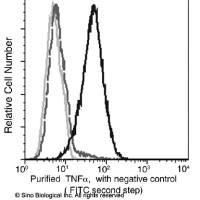The Electrovomeronasogram: Field Potential Recordings in the Mouse Vomeronasal Organ
互联网
互联网
相关产品推荐

Recombinant-Bovine-Short-transient-receptor-potential-channel-1TRPC1Short transient receptor potential channel 1; TrpC1 Alternative name(s): Transient receptor protein 1; TRP-1
¥15834

开场视频分析系统(inner open field )
¥20000

TNF-alpha / TNFA / TNFSF2 Antibody, Mouse MAb | TNF-alpha / TNFA / TNFSF2 鼠单抗
¥800

Recombinant-Mouse-Transient-receptor-potential-cation-channel-subfamily-V-member-3Trpv3Transient receptor potential cation channel subfamily V member 3; TrpV3
¥15806

Recombinant-Rat-Short-transient-receptor-potential-channel-1Trpc1Short transient receptor potential channel 1; TrpC1 Alternative name(s): Transient receptor protein 1; TRP-1
¥15526
相关问答

